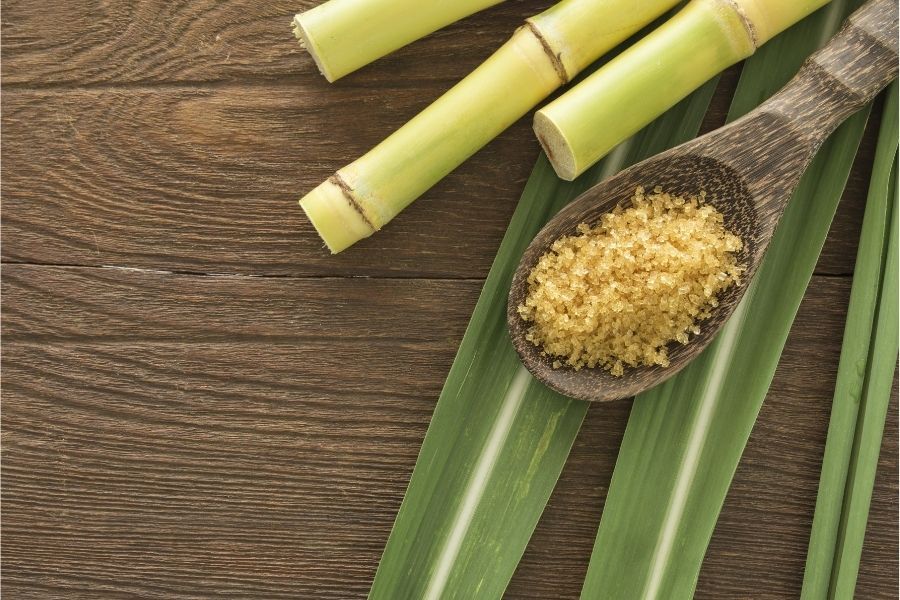Cane Sugar Processing: From Area to Table-- A Step-by-Step Guide
Cane Sugar Processing: From Area to Table-- A Step-by-Step Guide
Blog Article
Comprehending the Vital Strategies and Technologies Utilized in Modern Walking Cane Sugar Processing
The development of walking cane sugar handling has been significantly formed by the integration of advanced strategies and modern technologies that deal with both performance and sustainability. As we check out these vital innovations, it comes to be necessary to check out how they not only improve production yet likewise line up with wider industry fads and customer demands, increasing inquiries concerning the future of sugar handling and its implications for global markets.
Historical Context of Cane Sugar Processing
The historic context of walking cane sugar processing reveals an abundant tapestry of agricultural innovation and social exchange that has formed its development over centuries. The process of removing and refining sugar gained energy in India, where methods for formation were refined around the Sixth century.

Advanced Removal Methods
Efficiency in walking cane sugar extraction has seen considerable advancements, driven by the need for greater yields and reduced production expenses. This strategy not only boosts sugar yield however also minimizes the energy required for processing.
Furthermore, the adoption of membrane purification innovations, such as nanofiltration and turn around osmosis, has actually reinvented the splitting up of sugar from pollutants. These approaches enable the discerning permeation of sugar molecules while keeping larger impurities, streamlining the removal procedure and decreasing waste.
In addition, the combination of continual extraction systems has brought about boosted functional efficiency. Cane Sugar Processing. These systems keep a constant flow of walking stick product, ensuring optimal extraction problems and reducing downtime linked with batch handling
Innovative Refining Technologies
Refining techniques in walking cane sugar handling have gone through a transformative change, driven by the demand for higher pureness and boosted item top quality. Among the most significant technologies is the adoption of membrane layer filtering innovations, such as ultrafiltration and nanofiltration. These processes properly get rid of pollutants and colorants without the requirement for substantial chemical treatments, therefore protecting the sugar's all-natural taste and enhancing its allure.
One more significant innovation is the usage of ion exchange materials, which permit for discerning removal of undesirable ions from sugar services. This technology not just boosts the overall purity of the last product however also adds to decreased waste and ecological impact.
Furthermore, innovations in adsorption methods, using triggered carbon and various other sophisticated materials, have actually proven reliable in decolorizing sugar options while keeping optimal high quality. The combination of these cutting-edge refining innovations makes sure that producers can create refined sugar with premium clarity and taste, satisfying the progressing choices of customers.
Automation and Control Solution
Current advancements in refining innovations have led the way for substantial renovations in automation and control systems within walking cane sugar handling centers. These systems utilize advanced software program and equipment to boost operational effectiveness, minimize human mistake, and ensure regular product quality.
Modern automation original site integrates various components, including sensors, actuators, and programmable logic controllers (PLCs), enabling real-time monitoring and control of important procedures. For example, stress, temperature level, and flow prices can be specifically controlled during extraction, information, and condensation stages, optimizing efficiency and lessening waste.
Additionally, advanced data analytics and artificial intelligence algorithms play a pivotal duty in predictive maintenance, permitting operators to expect equipment failings prior to they happen. This proactive strategy not only lowers downtime however additionally extends the lifespan of equipment.
In addition, automation helps with the execution of Market 4.0 concepts, empowering sugar mills to attain higher connection and data exchange throughout processes. As an outcome, decision-making becomes even more educated and dexterous, ultimately boosting the general competitiveness of walking stick sugar production. With these innovations, the market is well-positioned to fulfill growing worldwide demands while keeping operational quality.
Sustainability Practices in Sugar Production
Sustainability methods in sugar manufacturing have actually come to be significantly necessary as the industry seeks to balance financial viability with environmental obligation. As consumer recognition grows pertaining to the environmental effects of farming practices, sugar producers are embracing cutting-edge methods to minimize their eco-friendly impact.
One considerable technique is the execution of precision agriculture methods, which use information analytics to enhance source usage, such as water and plant foods. This minimizes waste and decreases the influence on neighborhood ecosystems. Moreover, several manufacturers are transitioning to renewable resource resources, such as biomass from sugarcane by-products, to power their operations, thereby decreasing reliance on nonrenewable fuel sources.
Water management techniques are additionally essential; rain harvesting and reliable irrigation systems assist mitigate water scarcity concerns. Cane Sugar Processing. Furthermore, integrated parasite monitoring approaches lower chemical use, promoting biodiversity and soil wellness
Business social obligation efforts are emerging, with firms buying local areas and ensuring fair labor practices. By embracing these sustainability practices, the sugar market not only boosts its track record but likewise adds to a much more sustainable farming landscape, leading see here the method for future generations.

Conclusion
In recap, modern walking stick sugar handling includes a variety of innovative techniques and innovations that substantially boost return, effectiveness, and sustainability. Collectively, these developments place the walking cane sugar sector to fulfill modern demands while attending to vital global difficulties.
The evolution of cane sugar handling has actually been dramatically formed by the combination of advanced techniques and technologies that resolve both performance and sustainability.The historical context of cane sugar handling discloses a rich tapestry of agricultural advancement and cultural exchange that has formed its advancement over centuries. Developments in informative post milling and refining arised, laying the foundation for modern walking cane sugar processing.Refining techniques in walking cane sugar handling have undertaken a transformative shift, driven by the demand for greater purity and enhanced product top quality.In summary, contemporary walking cane sugar handling incorporates an array of advanced techniques and technologies that substantially improve yield, sustainability, and efficiency.
Report this page